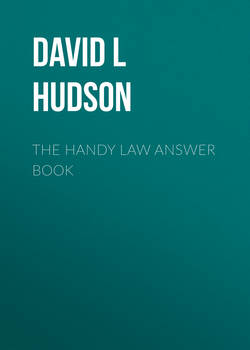Читать книгу The Handy Law Answer Book - David L Hudson - Страница 90
На сайте Литреса книга снята с продажи.
If the government places a Ten Commandments monument on government property, does that violate the Establishment Clause?
ОглавлениеMaybe, but it would depend on the particular circumstances. In June 2005 the U.S. Supreme Court decided two Ten Commandments cases and reached opposite results in 5-to-4 decisions. In Van Orden v. Perry (2005; see LegalSpeak, p. 42), the Court ruled 5 to 4 that a Ten Commandments monument in a Texas public park that had been there for 40 years and was surrounded by other historical landmarks did not violate the Establishment Clause. However, in McCreary County v. ACLU of Kentucky, the U.S. Supreme Court ruled 5 to 4 that Ten Commandments displays in two Kentucky county courthouses did violate the Establishment Clause. The Court emphasized that the displays initially contained only the Ten Commandments and that they were challenged soon after their display.
In an earlier decision Stone v. Graham (1980), a divided Court struck down a Kentucky law that required the posting of the Ten Commandments in public school classrooms. The difficulty in these cases is that different justices have very different interpretations of the Establishment Clause. Lower courts now reach different results in Ten Commandments cases.
